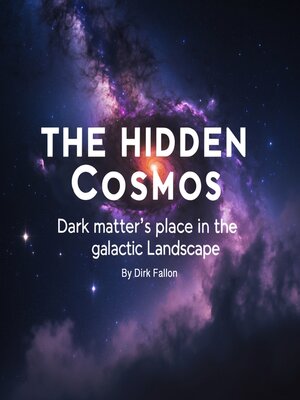The Hidden Cosmos
audiobook (Unabridged) ∣ Dark Matter's Place in the Galactic Landscape
By Dirk Fallon

Sign up to save your library
With an OverDrive account, you can save your favorite libraries for at-a-glance information about availability. Find out more about OverDrive accounts.
Find this title in Libby, the library reading app by OverDrive.



Search for a digital library with this title
Title found at these libraries:
| Library Name | Distance |
|---|---|
| Loading... |
Dark matter is one of the most intriguing and elusive subjects in modern astrophysics, captivating the minds of scientists and enthusiasts alike. It represents a type of matter that does not emit, absorb, or reflect light, making it invisible to the entire electromagnetic spectrum. Despite its invisible nature, dark matter exerts gravitational influence on visible matter, affecting the behavior of galaxies and the large-scale structure of the universe.
The concept of dark matter originated from astronomical observations that could not be explained by visible matter alone. Early studies of the rotational speeds of galaxies revealed that stars at the edges of galaxies were moving much faster than expected based on the mass of visible stars and gas. This anomaly led to the hypothesis that an unseen mass was responsible for the additional gravitational pull. As a result, dark matter is thought to make up about 85 percent of the total matter in the universe, profoundly influencing the formation and evolution of galaxies.
Scientific research on dark matter has involved numerous observational and theoretical studies. Researchers have relied on indirect methods to study this mysterious substance, such as analyzing the gravitational lensing effect, where the gravity of dark matter bends the light from distant objects. This effect not only provides evidence of dark matter's presence but also offers insights into its distribution across the cosmos. The study of cosmic microwave background radiation, the afterglow of the Big Bang, further supports the existence of dark matter by revealing fluctuations that can be linked to its gravitational effects in the early universe.







